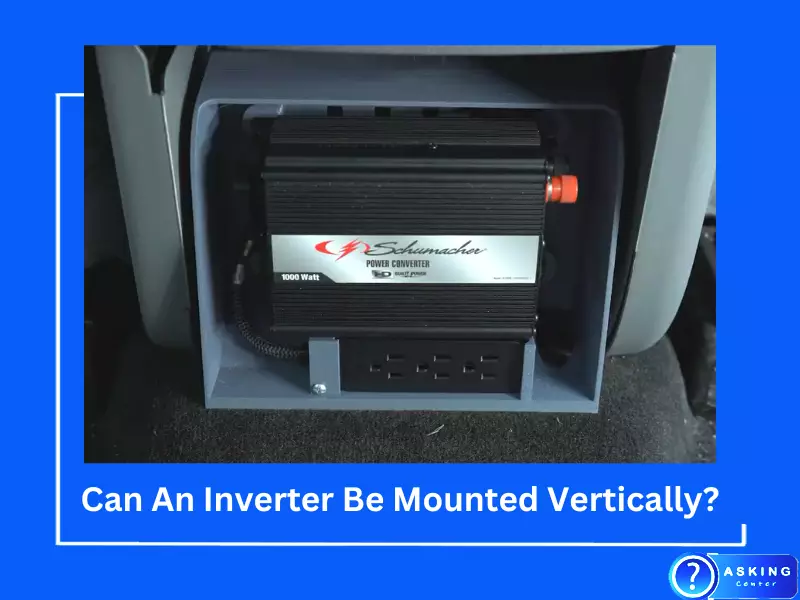Power inverters, those handy devices that transform our direct current (DC) into an alternating current (AC), have steadily become an integral part of our daily lives. They ensure our devices and appliances work seamlessly, whether during a power outage, in a vehicle, or at a remote site. The functionality and longevity of an inverter depend largely on how it’s installed.
To answer the central question briefly, yes, an inverter can be mounted vertically. The orientation during installation plays a crucial role in its operation, performance, and lifespan. While some might suggest that the horizontal orientation is ideal, a vertical mount has its advantages too.
Dive deeper into this article to unravel the fascinating world of inverters, their installation nuances, and some expert tips for successful operation. Engrossing details about the intriguing science behind vertical mounting and the potential mistakes to avoid during installation are about to unfold. Strap in!
What is an Inverter?
An inverter is an electronic device that converts DC from a battery (or solar panel) into AC to power household appliances. There are different types of inverters—such as sine wave, modified sine wave, and square wave—each suitable for different applications.

What To Consider When Installing An Inverter
Installing an inverter isn’t just about finding a spot and placing it there. Several factors need consideration.
Location and Space
An ideal location for installing an inverter should be clean, dry, and secure. Accessibility is important for maintenance, and sufficient space is crucial to ensure it doesn’t overheat.
Ventilation and Heat Dissipation
Inverters generate heat during operation. Proper ventilation is critical to prevent overheating and potential malfunction.
Orientation: Horizontal vs Vertical
There’s an ongoing debate about whether inverters should be installed horizontally or vertically. This mainly depends on the inverter design and the specific space constraints of the installation area.

Can An Inverter Be Mounted Vertically?
Yes, inverters can indeed be mounted vertically. The science behind vertical mounting is relatively straightforward—it primarily revolves around heat dissipation and component distribution.
Benefits of vertical mounting:
Vertical mounting helps with natural convection, allowing the heat to rise and escape efficiently. It also provides an additional layer of protection to the device, limiting the amount of dust settling on it.
Drawbacks of vertical mounting:
One potential drawback is accessibility. If mounted high up, it could be challenging to reach for maintenance.
The Biggest Mistakes When Installing An Inverter
Incorrect installation of inverters can result in performance issues or even damage. Here are some of the biggest mistakes to avoid:
Not considering the heat dissipation
Inverters need to stay cool to work efficiently. If the location doesn’t allow for proper ventilation, it may overheat and malfunction.
Ignoring manufacturer’s installation guidelines
Manufacturers provide guidelines for a reason. Not following these can lead to performance issues or void the warranty.
Lack of proper maintenance access
If the inverter is installed in a hard-to-reach area, it might complicate regular checks and maintenance.
Expert Tips for Successful Inverter Installation
- Follow the manufacturer’s instructions: This ensures optimal performance and keeps the warranty intact.
- Seek professional help when needed: If you’re unsure about the installation, it’s better to seek expert assistance.
- Regular checks and maintenance: Regularly inspect the inverter to prevent any small issues from becoming larger problems.
FAQs
Can I install the inverter myself?
While it’s possible to install an inverter by yourself, it’s advisable to seek professional help, especially if you’re unfamiliar with the process.
Can I mount my inverter upside down?
While technically possible, it’s not recommended due to potential issues with heat dissipation and component stress.
How often should I check my inverter for maintenance?
Ideally, inverters should be checked every 3-6 months for optimal performance and longevity.
Conclusion
As we now understand, an inverter can be mounted vertically, and doing so comes with specific benefits. Key considerations such as location, space, ventilation, and heat dissipation mustn’t be overlooked for successful operation.
Mistakes can be avoided by adhering to the manufacturer’s guidelines and by keeping regular maintenance checks in mind. The information contained in this article is a comprehensive guide that should illuminate the path towards a successful and efficient inverter installation.
